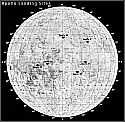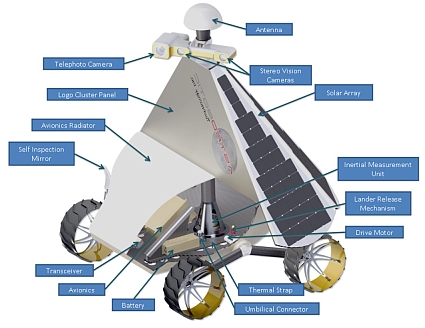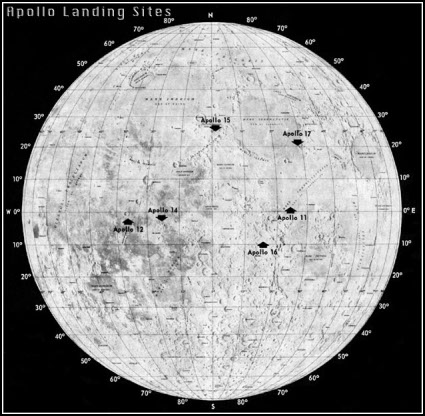Private firm plots robotic lunar expeditions
Last updated Oct 30, 2008 — 1862 views Astrobotic Technology has unveiled plans for a series of robotic expeditions to the Moon. The lunar rovers are intended to explore high-interest areas of the Moon’s surface and beam the data back to the Earth.
Astrobotic Technology has unveiled plans for a series of robotic expeditions to the Moon. The lunar rovers are intended to explore high-interest areas of the Moon’s surface and beam the data back to the Earth.
The plan is to accumulate an extensive library of lunar data and sell it to governments and private corporations, much as Navteq‘s terrestrial data forms the backbone of most GPS databases here on Earth.
Rendering of Astrobotic’s initial Moon rover
(Click to enlarge; source: Astrobotic Technology)
Astrobotic says its initial robotic Moon rover will have a 60 kg mass, 120W solar array source, and chain-driven four wheel drive. The device will collect data using high-definition stereo cameras along with a telephoto high-definition camera. Several dozen thermocouples will gather lunar surface temperature data.
“During the descent, the cameras will capture how the lander’s rocket motor plume disturbs the lunar regolith,” the company explains. “The rover will image its landing platform after it dismounts, to document its post-landing condition.”
Targeting Google’s Lunar X Prize
For starters, the company has has its eye on Google’s $30 million Lunar X Prize, which it hopes to win with a May, 2010 robotic trip to the Apollo 11 landing site at Mare Tranquillitatis (Sea of Tranquility).
NASA’s lunar landing sites
(Click to enlarge; source: NASA)
Five additional Astrobotic Moon rover expeditions are currently envisioned:
- South Pole Scout, to Shackleton crater rim in Q3 of 2011
- North Pole Scout, to an as yet undetermined crater rim Q1 of 2012
- Moon Quake 1, to Shackleton crater rim in Q3 of 2012
- Ice Surveyor, to Shackleton crater floor in Q2 of 2013
- Moon Dozer, to Shackleton Crater in Q3 of 2013
Q&A with Astrobotics president David Gump
Gump kindly provided the following responses to DeviceGuru’s questions regarding the company’s plans for implementation and funding of the missions:
- How will your company’s lunar rovers be transported to the Moon?
We have signed an agreement for a launch to Earth orbit on a commercial vehicle, but the terms don’t allow us to disclose the supplier’s identity at the moment. We expect we can announce the booster in a month or so.
- By what method will the rovers be deployed onto the lunar surface without damage?
From Earth orbit, we’ll use ATK’s Star 37fm kick motor for translunar injection, and at the Moon we’ll fire a Star 24 motor to decelerate almost to a stop about 4 km above the lunar surface. We’ll drop the Star 24 and then descend the rest of the way using a small landing platform equipped with precision propulsion and guidance derived from Raytheon’s missile technology. Imagery of the surface will be preloaded and the guidance system will match what it sees with the stored map to descend to the exact coordinates we seek. The imagery system also will be able to discern last-minute obstacles and divert to alternate landing spots.
The landing platform is shaped like an inverted saucer for a cup; the raised center node is where the rover connects to the platform to control its engines. There are no ramps from the lander down to the surface — the rover just breaks its electrical/comm connection to the landing platform and rolls over the lip of the platform to the surface..
- What is the expected cost of the initial Moon rovers?
The first mission’s direct costs are just under $100 million. There are additional costs to run the business — developing and executing revenue-generating activities such as the television programming and the corporate sponsorships for the first and subsequent missions.
- What is the estimated cost to deliver them to the Moon’s surface from Earth?
The just-under-$100M figure includes launch costs and the Star motors; at the moment we aren’t disclosing detailed breakdowns for every element.
- How much funding has your company received to date, and what are your plans for further capitalization?
The three institutions that cooperated in our founding — Carnegie Mellon University, The University of Arizona, and Raytheon — spent a good deal of money internally to create initial prototypes and mission designs. Astrobotic also has received direct funding from investors. All this together now exceeds $2.5 million.
We are in a seed round now that will close by the end of November, accepting investments from accredited individual investors and institutions. We’d like to keep any deeper discussion about financing and costs internal for the moment.
- Any other comments?
In two weeks or so, we will announce an expanded Board of Directors with impressive business and space credentials.
Currently, the company is inviting inputs from space agencies, aerospace corporations, university researchers, and industrial firms regarding the highest priority data to gather on these and other Moon rover expeditions.
Further details are available from Astrobotic Technology‘s website.



